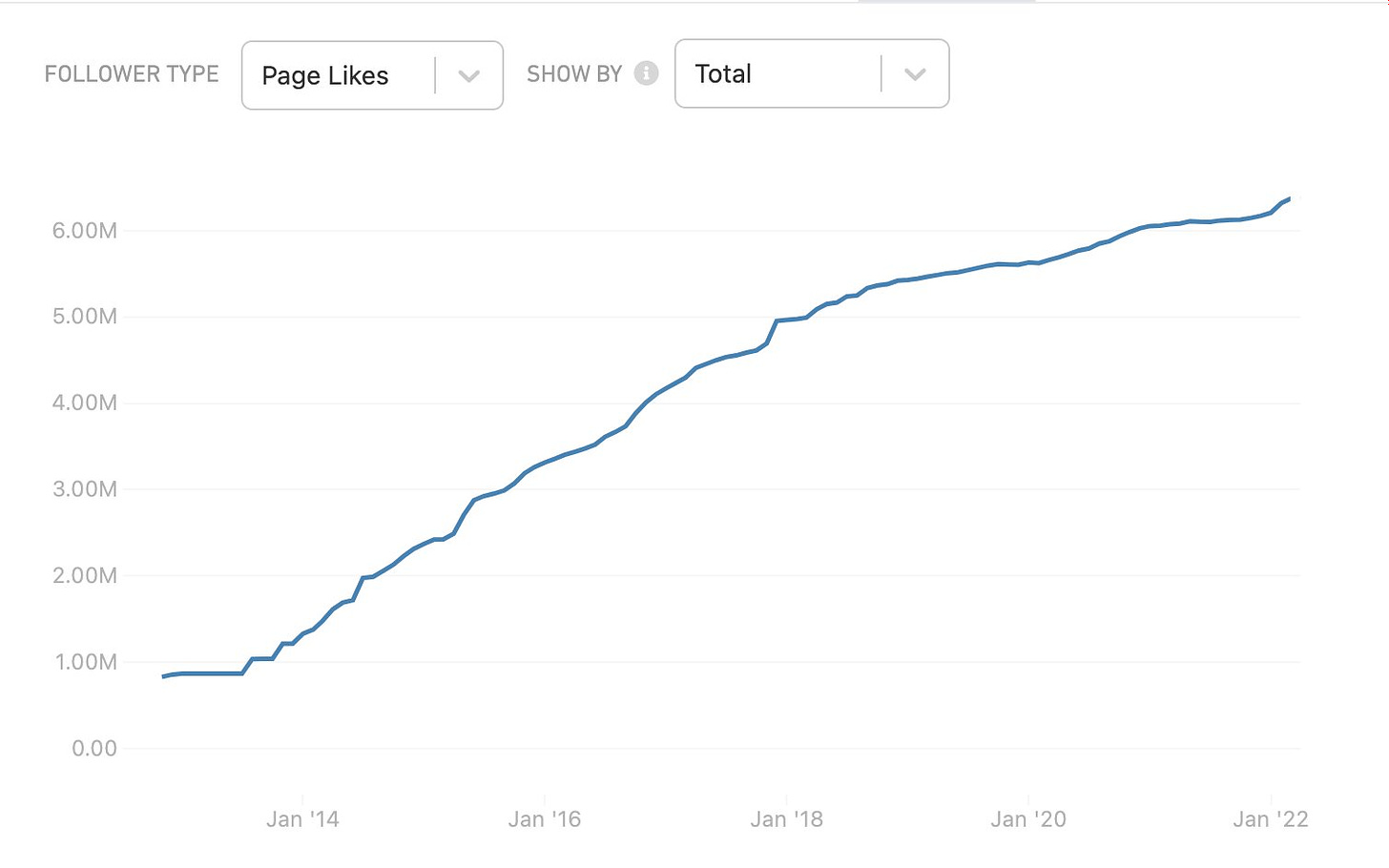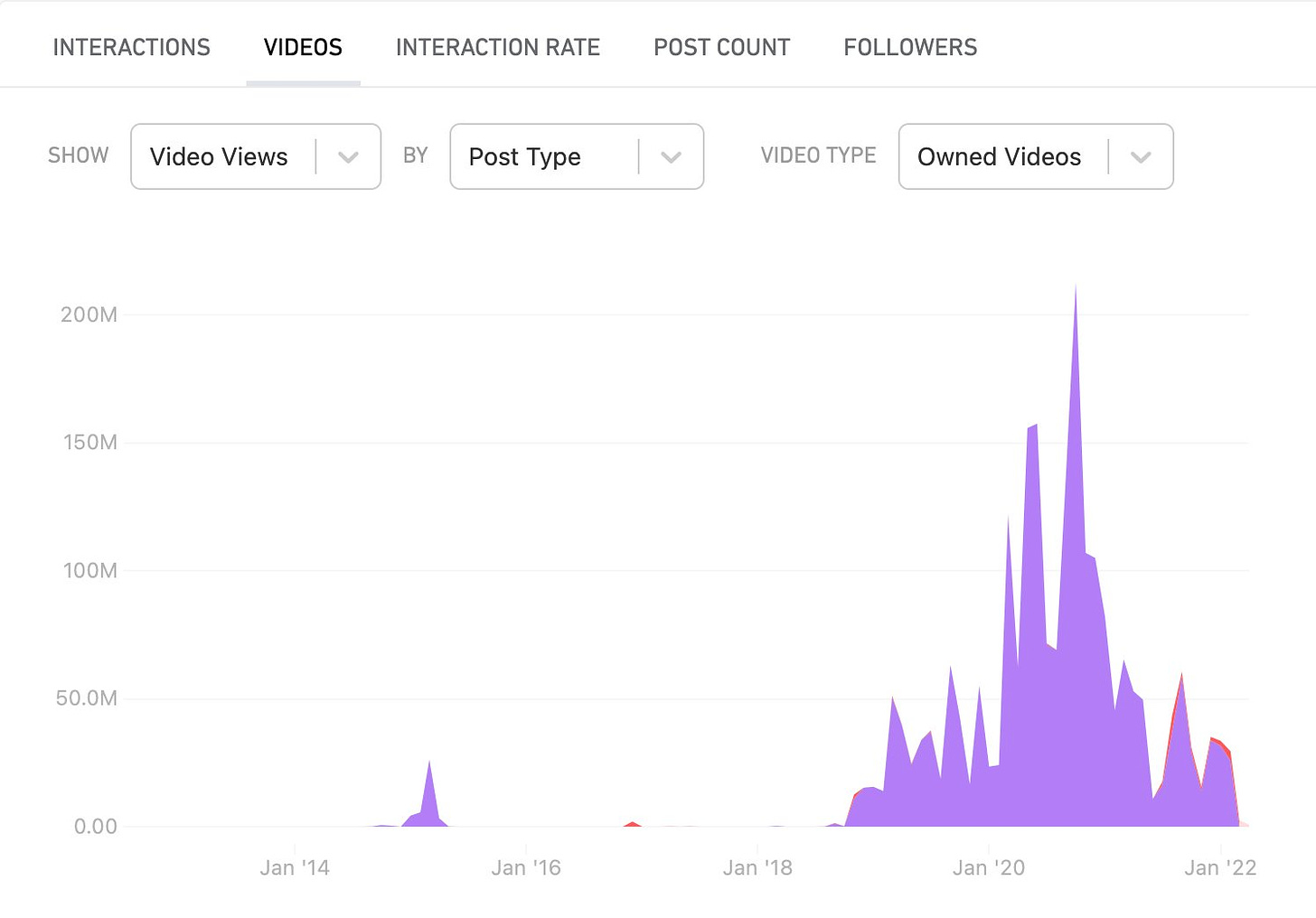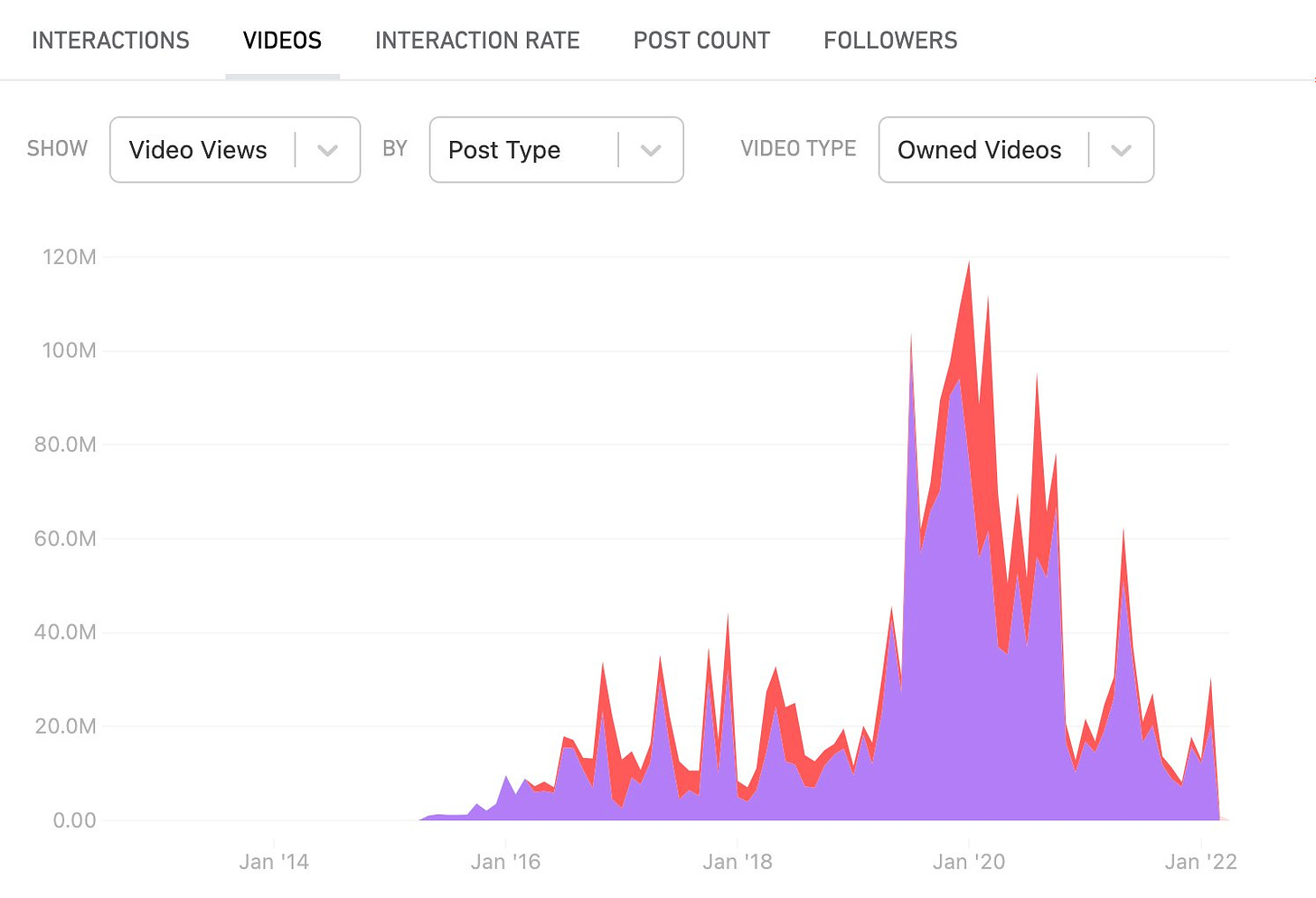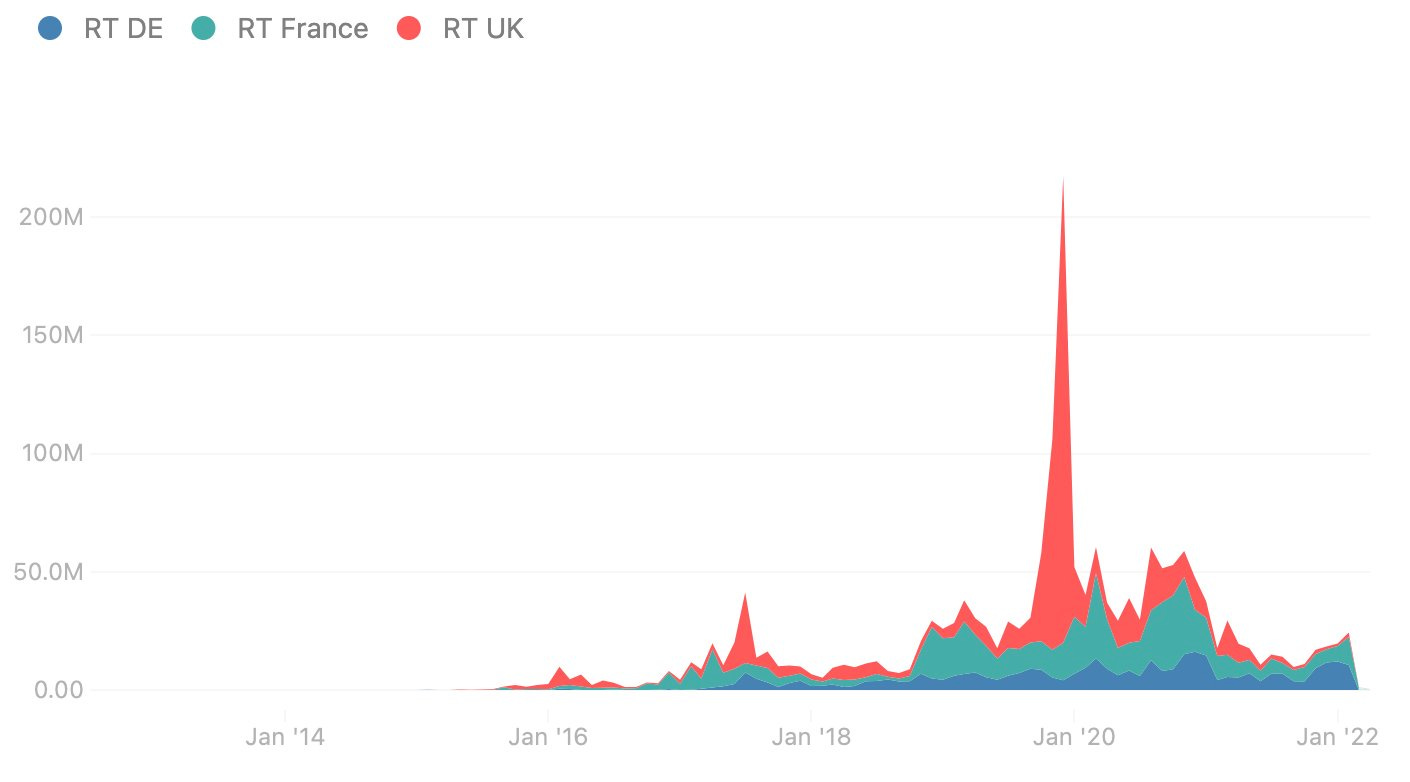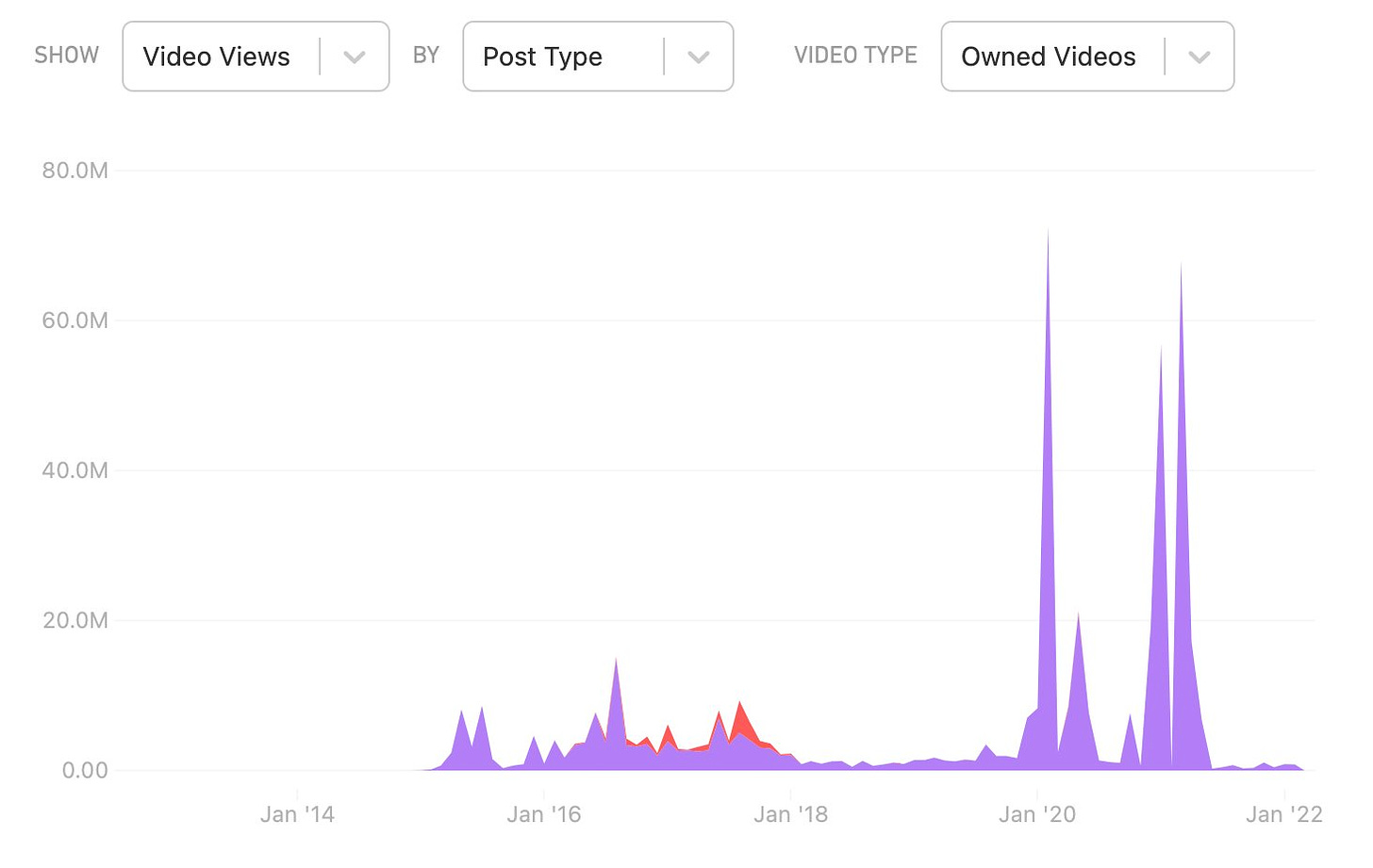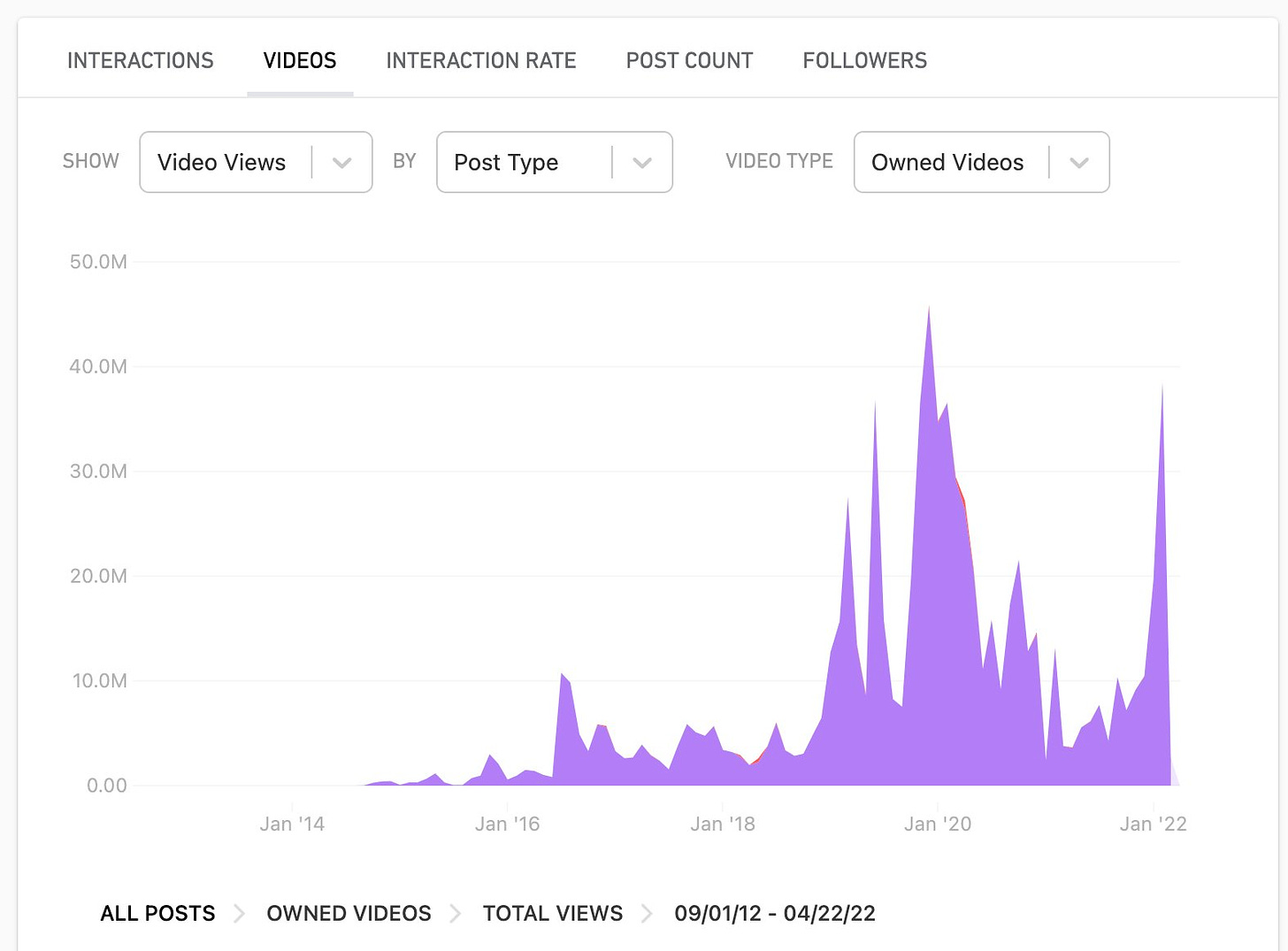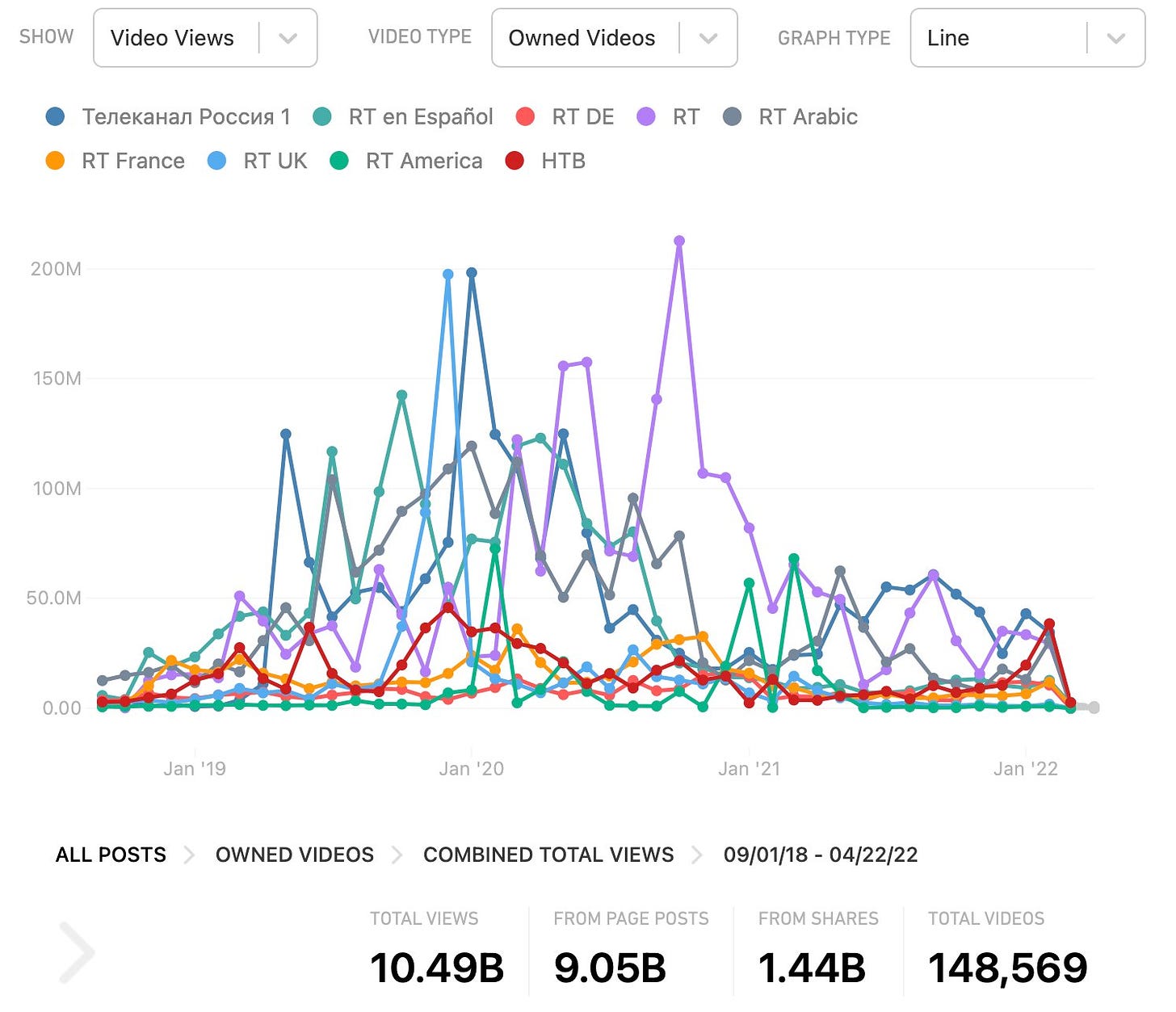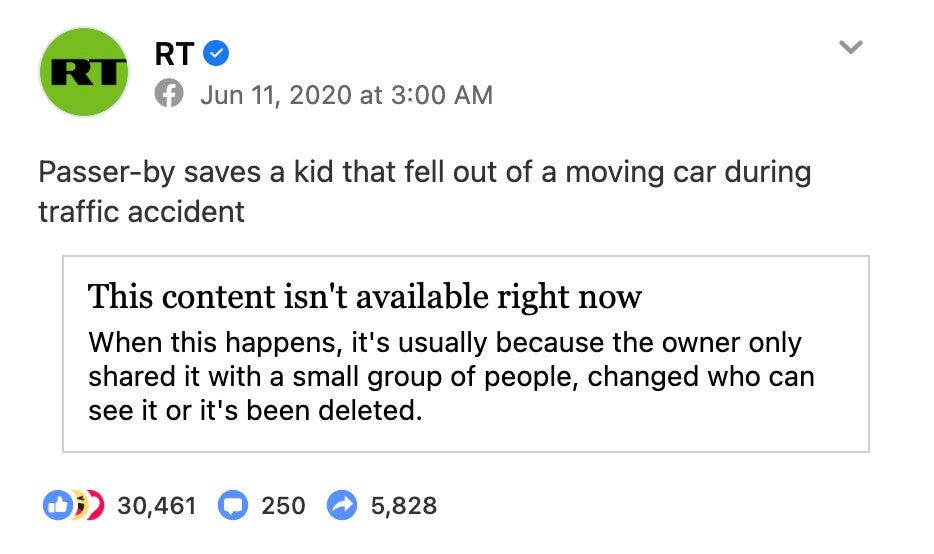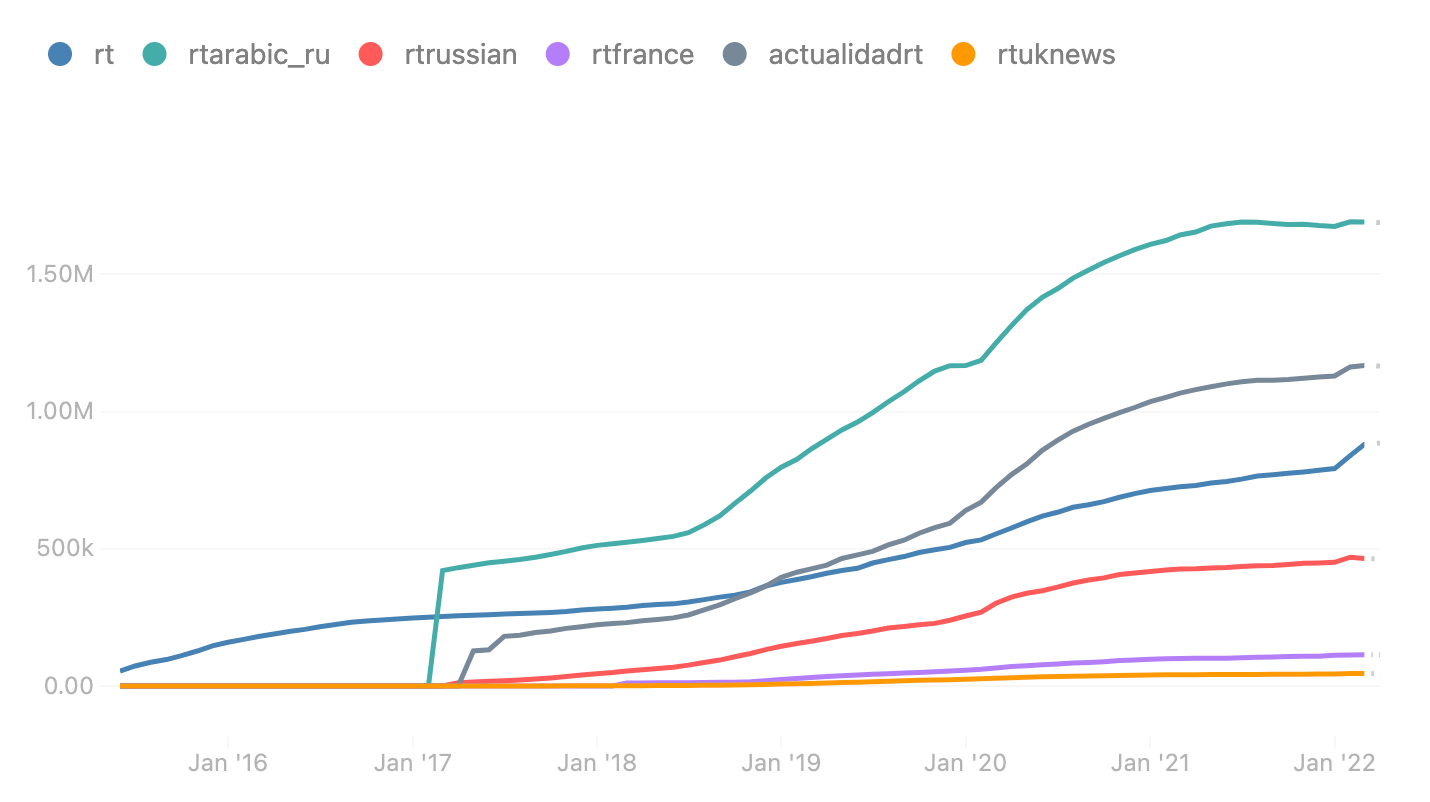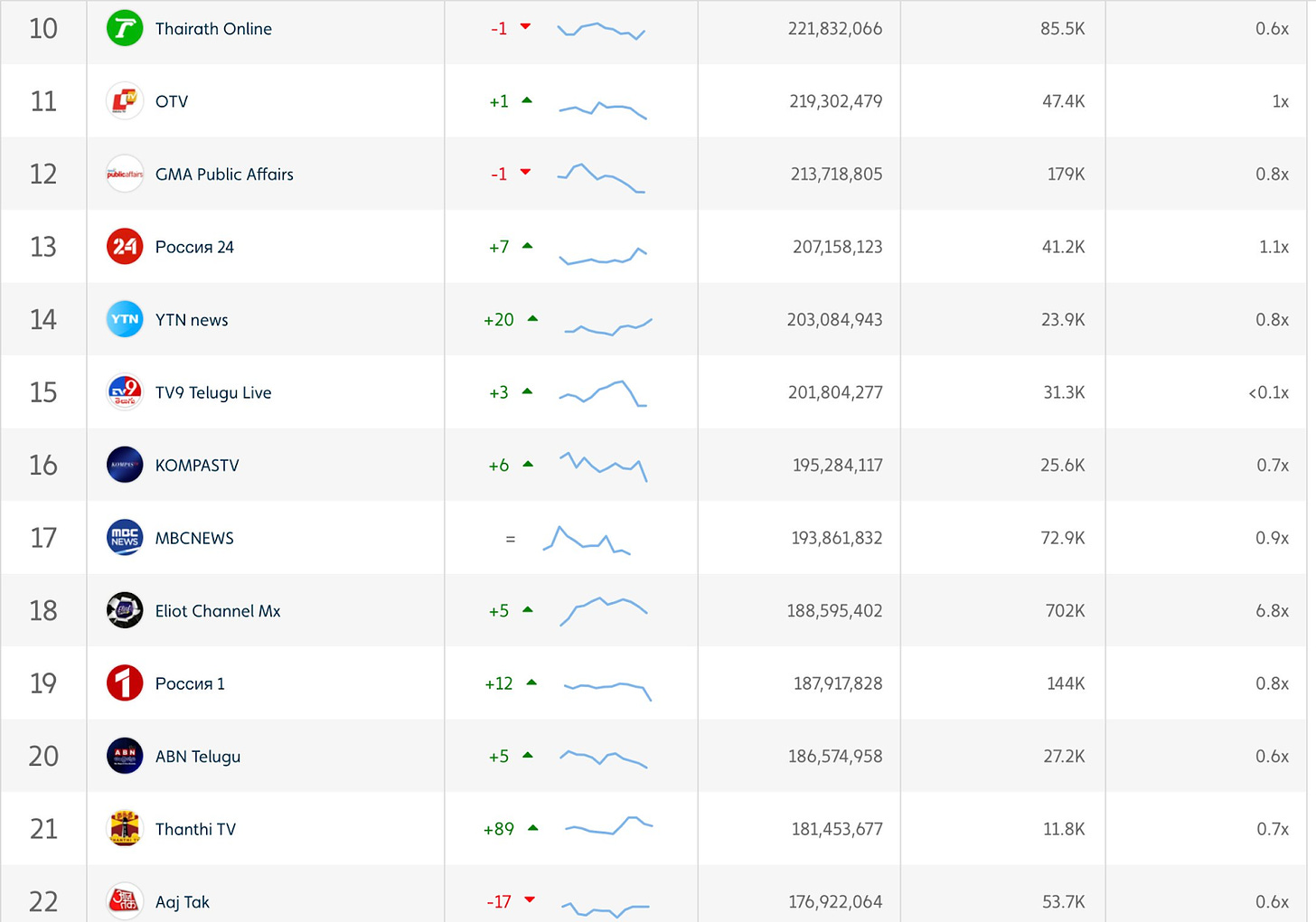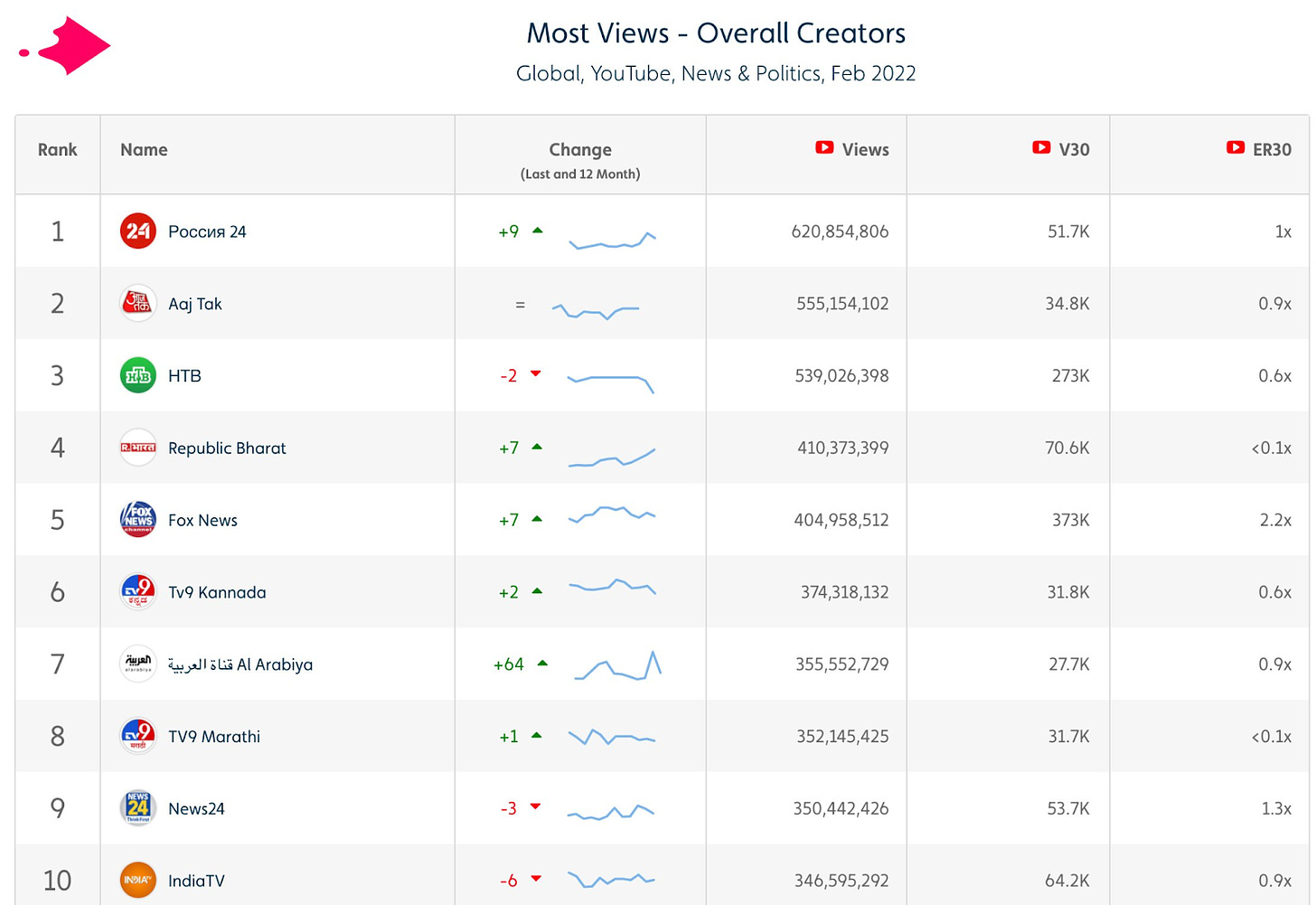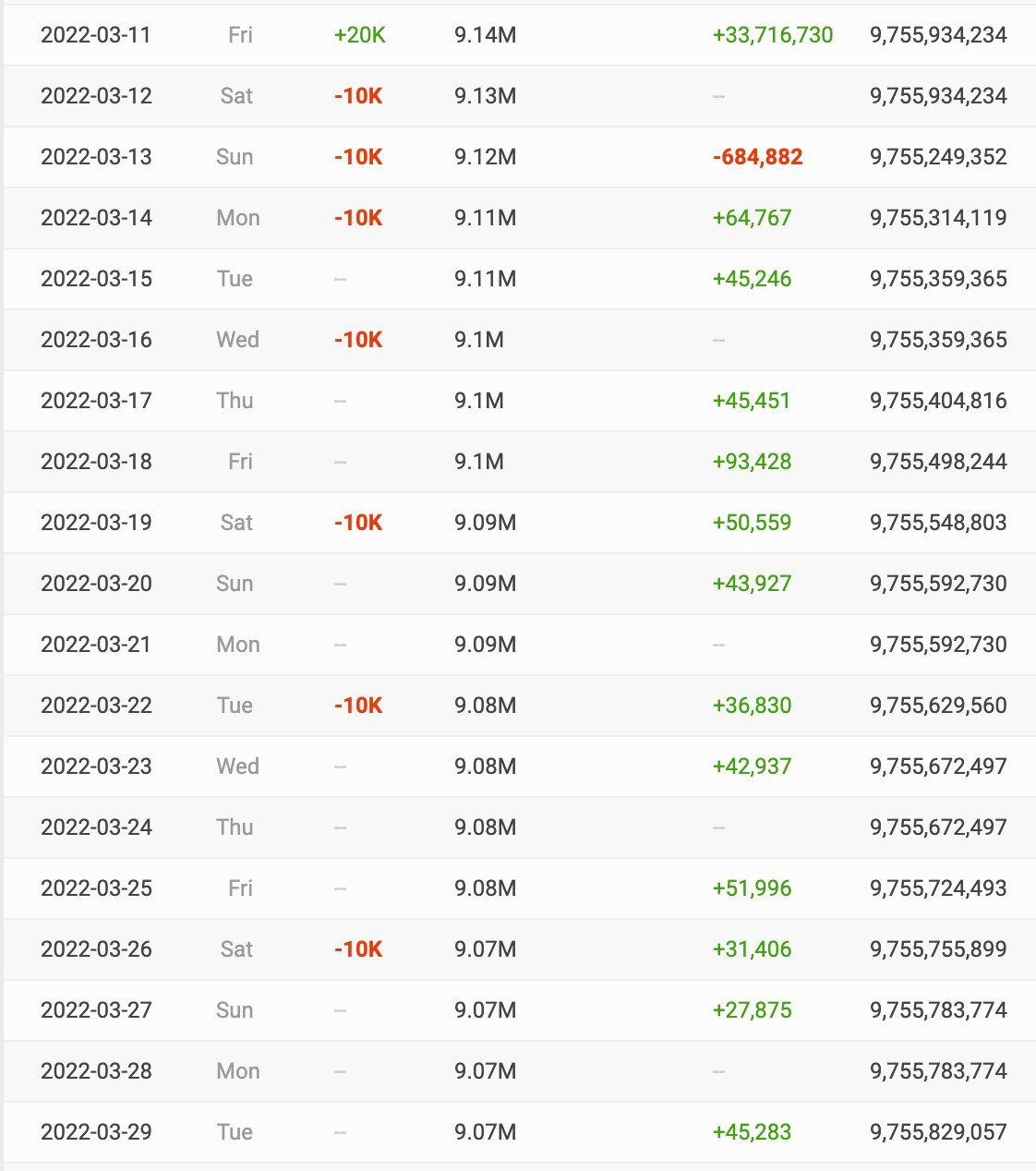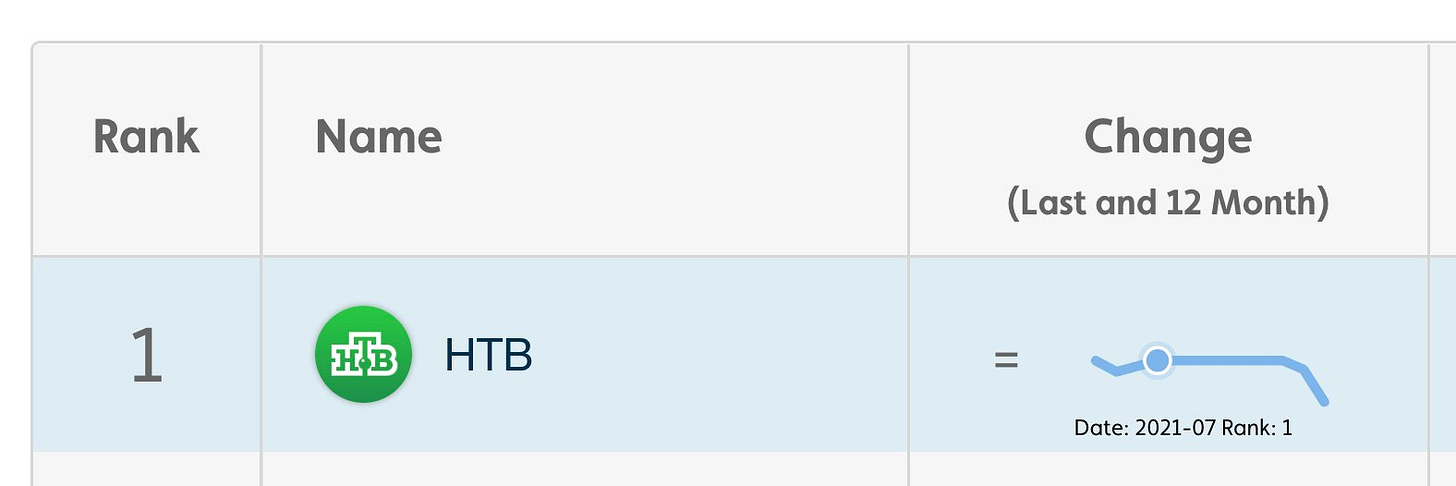How Meta and Google enabled the global Russian propaganda machine
Early during the war the tech platforms were rather quick to deplatform the Russian state-funded projects: Sputnik, RT, NTV, Russia 1 and so on. However, it is important to understand, as this article by Protocol asks, why they were popular in the first place.
It appears that while the business-oriented media were living through the nuclear winter from the failed pivots first to Facebook traffic and then to video on Facebook, the Russian propaganda outlets were not feeling pressured at all by the financials. On contrary, they were investing heavily into effective distribution of content across major tech platforms. And the platforms were eager to take their marketing money and give them reach.
To illustrate what had happened, I went through the performance of key pages for RT, NTV, Russia 1 on Facebook and Youtube using CrowdTangle (for Facebook and IG data), Social Blade and Tubular Labs public leaderboards (for Youtube data). These are all free tools available to anyone.
Facebook and Instagram
Let’s start with Facebook. I looked at the page performance data for the last 10 years (2012-2022). Digitally, Russian propaganda is an extension of the TV medium, so I specifically looked at three things: video views, followers (page likes) growth and amount of video content published.
I started with RT and its main FB page. Here’s how its following has been growing since 2012. This growth chart looks quite organic. I don’t think significant money was pumped to boost the page itself.
And now let’s look at what kind of content it posted. Until Jan 2018 it mostly posted links. And then it started leaning towards video. Until as recently as Nov 2021 the page was making around 600 video posts per month:
And that approach worked! Between 2018 and 2022 the page was getting up to 200m video views per month, which is great performance.
And now let’s look at other RTs. The biggest ones are RT Arabic and RT Spanish. Here is their growth vs main page. The abrupt spikes in numbers are either mergers of smaller pages or intense marketing boost. My guess is the spike around Jan 2020 for Spanish is marketing, while the other spikes are mergers.
A deeper dive into RT Arabic posting structure shows a lean towards links. But in absolute numbers the views are still significant.
At RT Spanish, a bigger amount of videos, and a similar amount of video views.
Now moving on to RT’s major European properties - RT UK, RT France and RT DE. They are kinda small, as opposed to the previous ones, with RT UK having a big splash just once in terms of video views.
RT America? A bit more interesting. Starting 2018 it stopped posting links and made a full-fledged pivot to video. But that wasn’t paying off in views until 2019-20.
We can see a similar pattern with pages of Russian-language TV channels like NTV and Russia 1. A heavy lean towards video content and lots of views in 2018-2022.
Collectively RT, NTV and Russia 1 received 10 billion views between 2018 and 2022 on Facebook, having posted 150,000 videos.
What were they posting? While it’s hard to go into that, since these pages cannot be accessed from Ukraine. I can get a glimpse from CrowdTangle. Most of the highest performing posts are standard viral content.
But when the time comes (Feb 2022) the most viral content for RT main page is a report from “drills” that in three days end with invasion of Ukraine.
On a smaller scale this same thing happened on Instagram. Between 2014 and 2022 RT amassed 4.5+ million followers on this platform and almost 1.5 billion views with its Espanol service alone getting over 25 million views in January 2022.
YouTube
And it’s not just Facebook of course. While Google is trying to keep a low profile and allow Zuckerberg to get most of the bashing, its role in the rise of Russian disinfo is at least as significant. For that I’ll switch to Tubular Labs, which is a major tool for social video analytics.
I will be using public leaderboards, which anyone can access on their website. They data is only available for the last several months. So here’s the global Youtube leaderboard for the “News and Politics” category for November 2021.
Although RT has not been such a success on Youtube (at least recently), NTV, which is a Gazprom-funded TV channel is number 1 globally having received 429m views in November only. State-funded Russia 1 and Russia 24 are also on the top 20 with 187m and 207m respectively.
Well, maybe November last year was big for Russian propaganda, one might say. Let’s check Dec 2021. Even more views for NTV.
How about January?
February? Whoa… NTV and Russia 24 in top 3 clocking over 1.1 billion views.
And the ‘deplatformed March’? Russia 24 is still there. Why? Because it was getting crazy numbers in the first two weeks of March. For that I checked its n Social Blade, which allows you to see the daily views statistics:
YouTube allowed Russian TV channels to get unprecedented amounts of views (tens of millions per day) totally unchecked. And it’s been like that for years. On Tubular Labs you can zoom in and see the 12-months ranking data of a channel from the public leaderboard. This is NTV:
So while the tech platforms are saying “it’s not us” and are limiting reach of whatever they can (though not banning anything), it looks like there’s been a decade-long history of ignorance and greed. Major tech platforms played a key role in the global growth of Russian-funded propaganda machine. This text is just a result of a very quick digging - I spent like a couple of hours doing these screenshots. Much more work lies ahead.
Thanks for reading! Send me your feedback at andrew.boborykin@gmail.com or follow me on Twitter.



